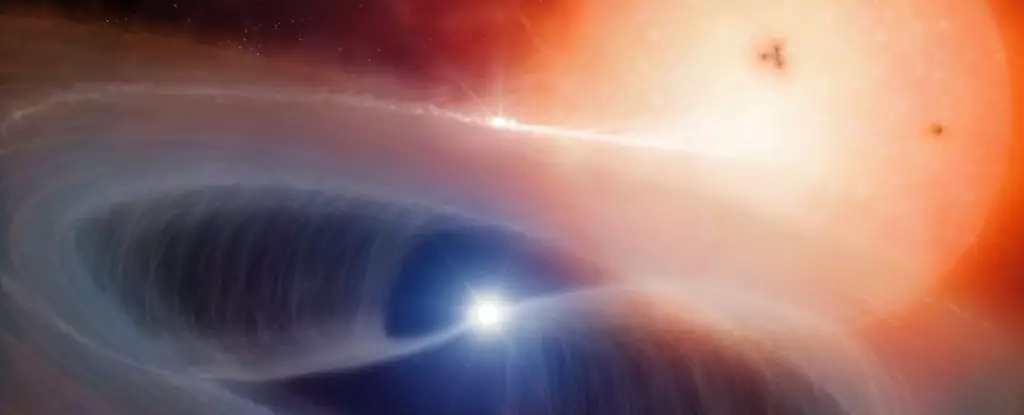The cosmos is teeming with mysteries, one of which revolves around the origins of metallic elements scattered across the universe. While it is established that these metals are birthed through cosmic phenomena, pinpointing the exact stellar events responsible for their formation is a far more intricate issue. Among the various sources, Type Ic supernovae have emerged as significant contributors, yet the precise nature of their progenitor stars has remained elusive. A recent investigation led by an international team of astronomers, including Martín Solar and Michał Michałowski from Adam Mickiewicz University in Poland, has shed light on this cosmic riddle, challenging previous assumptions about the mass and characteristics of the stars that ultimately lead to these explosive events.
Type Ic supernovae are a class of stellar explosions triggered by the collapse of massive stars at the end of their life cycles. These supernovae are notably devoid of hydrogen and helium, unique compared to other types of core-collapse supernovae. This absence has posed a conundrum for astronomers, raising questions about the fate of these lighter elements that are generally expected to survive in the stellar atmospheres until the point of explosion.
When a massive star exhausts its hydrogen supply, it begins a fusion process that yields heavier elements. Eventually, the internal pressure that sustains the star begins to wane, leading to gravitational collapse. This implosion results in a neutron star or black hole at the core, with the outer layers expelled into space at tremendous velocities, resulting in the synthesis of even heavier metallic elements.
Two primary theories have been proposed to explain the absence of hydrogen and helium in Type Ic supernovae. One theory suggests that progenitor stars have masses between 20 and 30 solar masses, generating stellar winds so potent they can strip away their atmospheric lighter elements before the cataclysmic explosion occurs. Alternatively, the interaction with a close binary companion star—generally of a lower mass—could account for the siphoning of these elements, allowing them to be whisked away long before the supernova ignites.
Until recently, the understanding of these progenitor stars leaned heavily on the assumption that they were predominantly massive, isolated entities. However, the complexities of stellar evolution imply that an intricate interplay of factors, including stellar mass, metal enrichment, and binary relationships, can significantly influence their lifecycle and subsequent explosive outcomes.
Utilizing data from high-resolution galactic observations, the research team sought to decipher the characteristics of the progenitor stars associated with Type Ic supernovae. The PHANGS project, which records details of molecular gas clouds that serve as stellar nurseries, provided a backdrop against which this research could thrive. By analyzing the remnants of Type Ic supernovae, the researchers could glean insights into the progenitor stars’ masses based on the volumes of molecular gas—specifically hydrogen—remaining at the explosion sites.
Surprisingly, findings indicated that the gas clouds left behind from Type Ic supernovae exhibited similar hydrogen content to those resulting from Type II supernovae, established to have progenitors with masses between 8 and 15 solar masses. This revelation contradicts prior assumptions that Type Ic progenitors were predominantly high-mass stars, molding a new understanding of their formation.
These observations bolster the notion of the binary companion model, suggesting that many Type Ic progenitors are not merely massive but rather less heavy stars closely linked to a partner that strips away vital elements. Though the explosive event results in the obliteration of the progenitor star, the companion typically survives, often sent into a different trajectory across the cosmos.
This shift in understanding highlights the relationship between binary systems and the generation of crucial elements like carbon, integral to life as we know it. The research team anticipates that continued studies of supernova remnants will enhance our knowledge regarding the life cycles of progenitor stars, providing a clearer picture of how elements are distributed in the universe.
As the astronomical community continues to explore the dynamics of stellar evolution and supernovae, the implications of these findings could reshape our comprehension of cosmic element formation. By examining additional supernovae and their characteristics, researchers aim to discern finer details about the nature of these stellar explosions and their progenitors.
This unfolding narrative not only offers insights into the past events that forged the building blocks of life but also invites profound questions regarding the influences of galactic environments on stellar behavior. The exploration of these cosmic fires holds vast potential, ultimately bridging the intricacies of stellar evolution with our quest to understand the very essence of the universe.


Leave a Reply